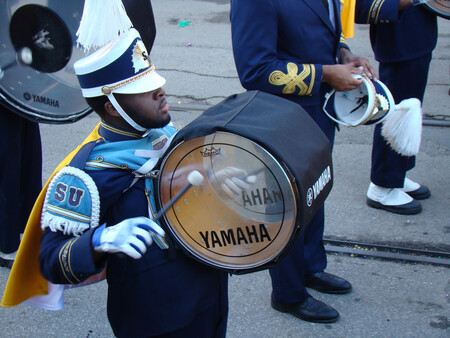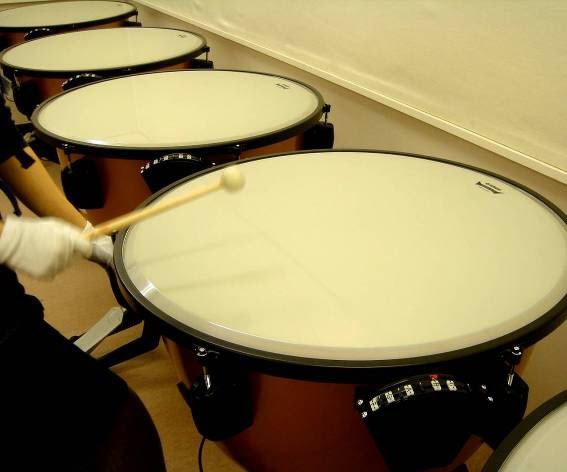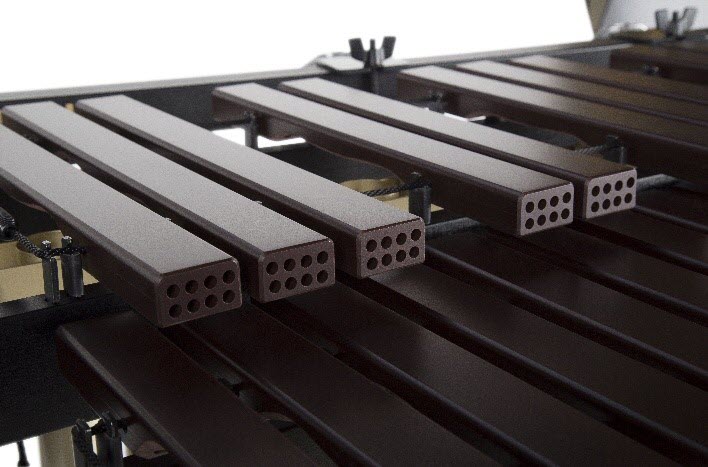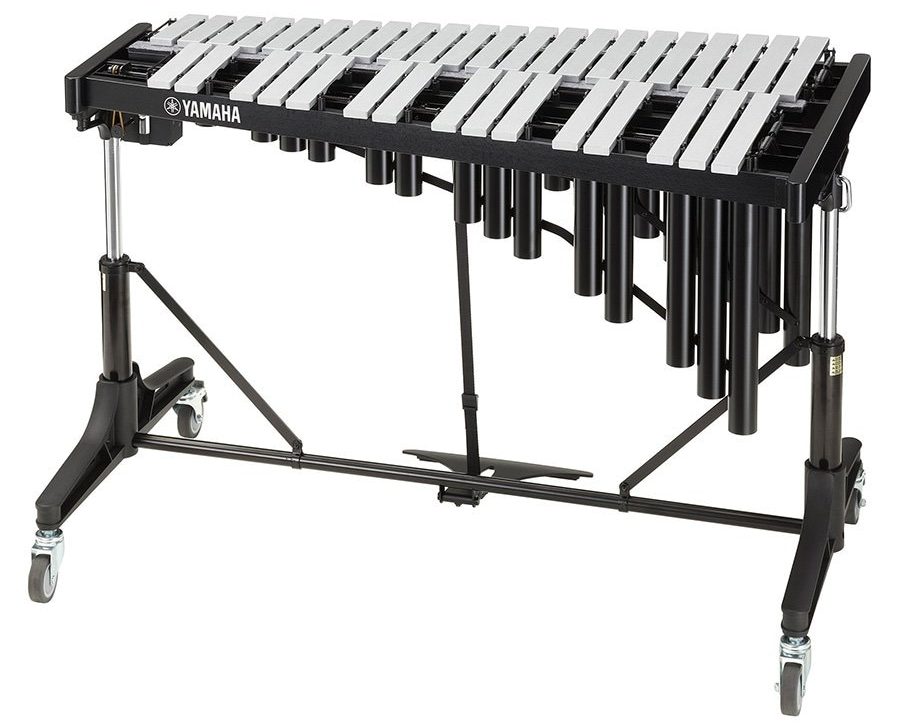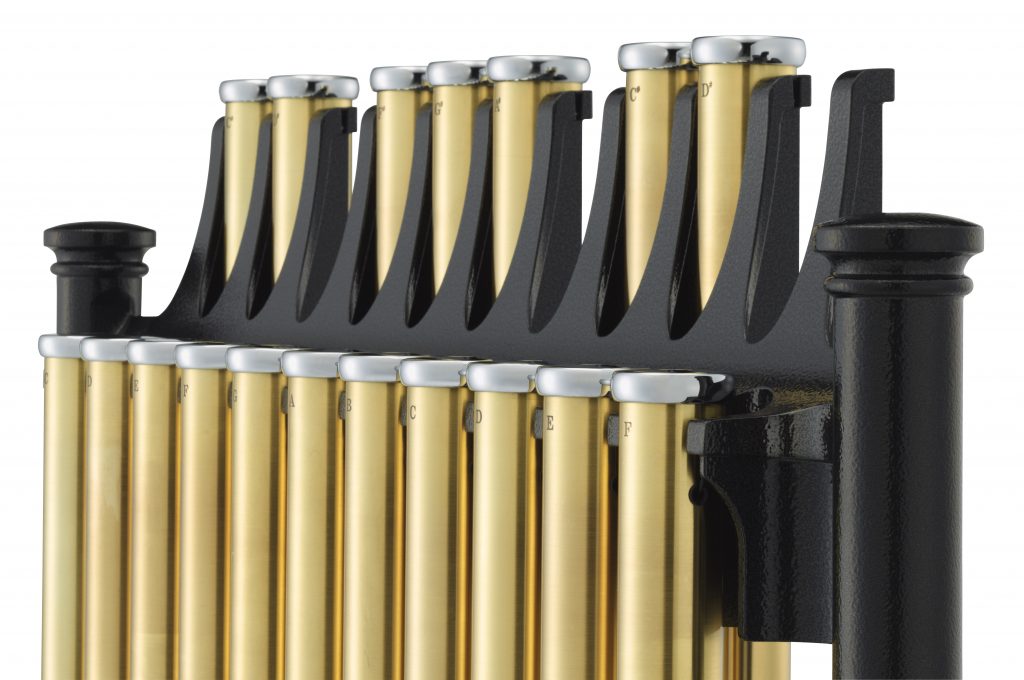What’s the Difference Between Vibraphone, Glockenspiel and Chimes?
Metal mallet percussion instruments have musical personalities all their own.
The mallet percussion family is made up of five instruments: marimba, xylophone, vibraphone, glockenspiel (sometimes called “orchestral bells”) and chimes. In the a recent blog posting, we discussed the wooden mallet instruments: marimba and xylophone. Now let’s talk about the metal mallet instruments: vibraphone, glockenspiel and chimes.
Range and Tonality
The sound characteristics of vibraphone, glockenspiel and chimes differ due to factors such as the bar material (aluminum or brass), physical construction, and the type of mallet being used. In addition, as you can see from this chart, the three instruments have different ranges: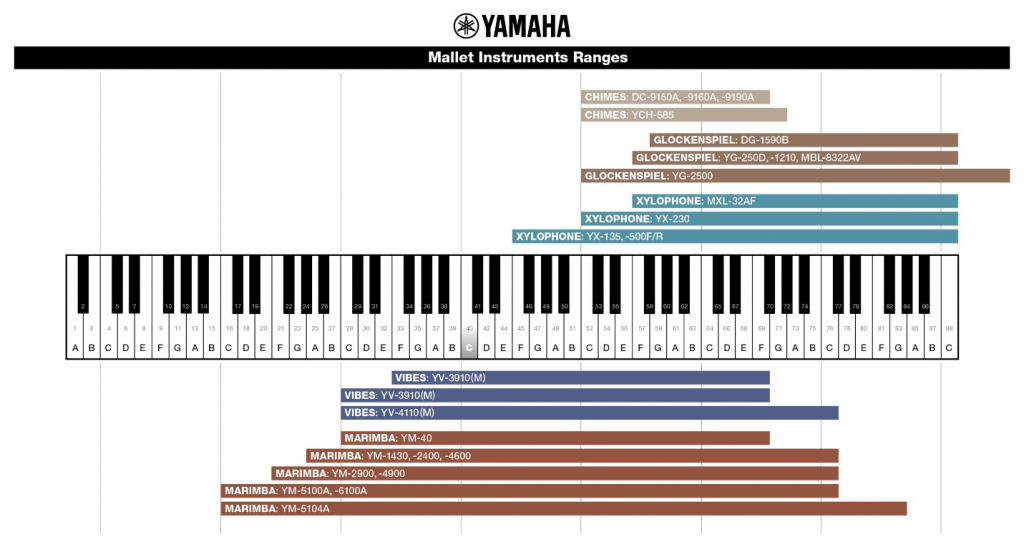
The vibraphone has the lowest range of the metallic percussion instruments (beginning at C) and has a soft mellow sound. The glockenspiel occupies a higher range (also beginning at C) and has a sharp, piercing sound. Chimes have the smallest range of any mallet percussion instrument (one and a half octaves) and are sonically reminiscent of church bells.
The vibraphone and some glockenspiels have metal resonators (sometimes called resonator tubes or resonator pipes) suspended beneath the tone bars, with the length of each resonator varying depending on the pitch of the tone bar; the lower the note, the longer the resonator. (Some glockenspiels use a wooden box as the resonating chamber.) On the vibraphone, motor-driven rotating disks (called “fans”) are also situated at the top of each resonator, allowing the player to add a vibrato effect to the sound by turning the motor on or off and varying its speed.
These videos demonstrate the sonic differences between the three instruments:
Tuning
Glockenspiels and vibraphones use the same tuning system as the marimba: octave-tuning. Octave-tuning involves tuning the fundamental and 4th overtone. Chimes have the most complex tuning system of any mallet percussion instruments. According to Grove Music Online, “An interesting acoustical property of chimes is that there is no mode of vibration with a frequency at, or even near, the pitch of the strike tone one hears. Modes 4, 5 and 6 appear to determine the strike tone. These modes are nearly in the ratio 2:3:4, so the ear considers them as overtones of a missing fundamental an octave below mode 4.”
Bar Material
The bars of the vibraphone and glockenspiel are made of an aluminum alloy. Vibraphone bars are anodized and can be matte gold, matte silver or glossy gold. Chime tubes are brass and are sometimes chrome-plated.
Also check out our blog article What’s the Difference Between Marimba and Xylophone?
Yamaha offers a wide variety of mallet percussion instruments to fit any situation. For more information, visit the Yamaha Percussion website.











